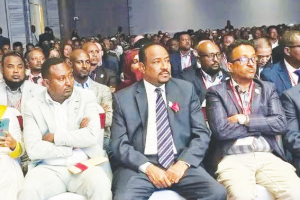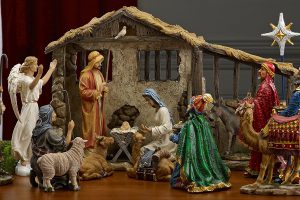
“Blood Rituals” by Mulugeta Gudeta is a new novel in English that is set in the 1960s and 1970s when the student movement and the February revolution coincided to produce a historic chemistry that led to several social explosions, transformations and tragic events.The novel progresses from dealing withevents within the university campus at Sidist Kilo and spreads to the nearby streets. Streetswhere students face the police and fall victim to violent repression that is in a way the central theme of the story.
In 2008, Mulugeta published a novel entitled “Evild Days” which is dealing with the terror under the military dictatorship of Colonel Mengistu Haile Mariam.
“Blood Rituals” which is dealing with historical events that precede “Evil Days” is a kind of book that gives the backdrop to the second novel.
The two works are also intertwined thematically as both deal with revolution, terror, violence and the struggle for power.
In a paper she wrote as part of her PhD studies, WudalatGedamu who is herself a writer says that “Evil Days” was not only about the violent events that came after the revolution and found their most brutal expression in the so-called Red Terror.
She says that, “Although there are many themes dealt with in Evil Days, the themes of forgiveness, abuse of power, love, injustice and the Red Terror are given particular attention”
The same can be said about Blood Rituals which is basically about the student movement and the struggle for power after the Revolution but also deals with tragic theme such as the loss of love, hatred towards injustice and the hope of redemption after all the blood spilling that takes place for many decades before and after the revolution of 1974. The author uses factual events as framework for setting his narrative and the single theme of bloodshed runs through all the historical events that brought emperors and dictators to power.
The story is told in the first person and the main character is a boy called Gebre who first refuses to be brought into the world because of too much violence that was prevailing at the time of his expected birth. His actual birth is postponed for eleven years and coincides with the death of the student leader called Abel who is in fact a fictional representation of Tilahun Gizaw who was assassinated by the security forces of the last Emperor as an attempt to silence him and silence the rebellious university students.
The author juxtaposes positive characters such as Gashaw who is more tolerant than the radical students who advocate violence in order to show the struggle between the conservatives and the radicals at that time. In his dealing with the theme of love, the author portrays a tragic character called Arsema who falls in love with a violent student activist called Amha who abandons her and indulges in his obsessive preaching of revolutionary violence. In her disappointment, Arsema is transformed from a radical female student whose real life prototype may be the well-known revolutionary Martha Mebrehatu who was killed in an attempted plane high jacking, into a pacifist.
There are also a number of interesting characters in the novel such as Professor Kebede the economist who is the brain behind the radical students who fight against each other as the revolution enters a new phase with the assumption of power by the military officers who liquidated the student leaders and monopolized power as it often happens in Ethiopian modern history.
The theme of power versus powerlessness is epitomized in the lives of the main character and his mother who have nothing to do with the violence and bloodletting but pay the price of their powerlessness when the hero’s mother falls victim of a bullet wound during a shootout in Mercato between the security forces and the young radicals. The fate of Gebre and that of his mother is symbolic of the price thousands of innocent bystanders paid as the various factions resorted to indiscriminate killings.
At the end of the story, Gebre and his mother survive the violence with physical and mental wounds or scars that continue to torment them. But this does not prevent the hero of the book from contemplating a time without violence that look distant but realizable. At the end of the book, Gebre indulges into a kind of soliloquy in which he dreams of such a time free from violence and bloodshed. He says, among other things, “… “How will all this blood spilling end at last?” I shouted angrily. There was a brief moment of silence and then the same voice shouted back, “When the old generation that grew up in violence, wars, hatred will pass away and a new generation will come to the fore, a generation cured of the virus of violence that it inherited from its predecessors, a generation that will be able to laugh at the stupidities of its elders.
“It will end when people stop killing their own brothers and sisters and kill the hatred in their hearts instead, when tears turn into laughter and the most important person will turn out to be no one else but the best satirist or comedian who will manage to lead the people with laughter and love and compassion and the biggest gift to his people will be the ability to laugh and laugh and laugh…to make up for the centuries spent in tears, tears, tears and blood, blood, blood.
This in my opinion is the message of the novel. The author speaks through Gebre and tells us to stop the killings and engage in national soul-searching and a quest for love and compassion and forgiveness. In a way Mulugeta’s novel may be prophetic in the sense that recent events seem to corroborate his dream of compassion and love that have become the central themes of the current political reforms. In this way, the author seems vindicated by real events. Mulugeta says that he wrote the novel at the height of the popular protests of the last four years that led to the advent of a new government that has vowed to put an end to the violence that characterized Ethiopian history in the past.
Another important point that needs attention is the technique used by the author to bring the story to life. In addition to the first person narrative point of view, Mulugeta uses the devices of magical realism and the eyes of the all seeing or omnipotent narrator whose actions and thoughts may look strange or magical but at the end of the day they give power and magical authenticity to the story. He is also using the stream of consciousness technique to let the hero tell us about his life in a chaotic but meaningful way the end result of which is believability and even astonishment on the part of readers. The depth of his imagination is such that he manages to weave the real with the supernatural in order to take us into the depths of the hero’s consciousness.
The author’s grasp of ordinary lives of ordinary Ethiopians is amazing and his portrait of the culture of rural as well as urban communities is most astounding.
“Blood Rituals” is no doubt another addition to the literature of post-revolution Ethiopia that is seldom dealt with in fictional form. As an active observer of history, Mulugeta gives us a firsthand portrait of the actors and factors that shaped recent Ethiopian history, and as he himself says in his dedication page, continue to shape our history to this very day.
Mulugeta Gudeta should be commended for writing this highly readable novel in English as a commitment to communicate our history, our life, our hopes and frustrations to the outside world in a balanced way. More books of this kind should be published both as lesson to the new generation whose knowledge of Ethiopia may be incomplete if not unrealistic
Herald December 16/2018
By Keleme Gebre





